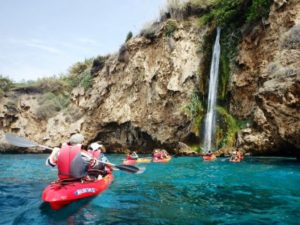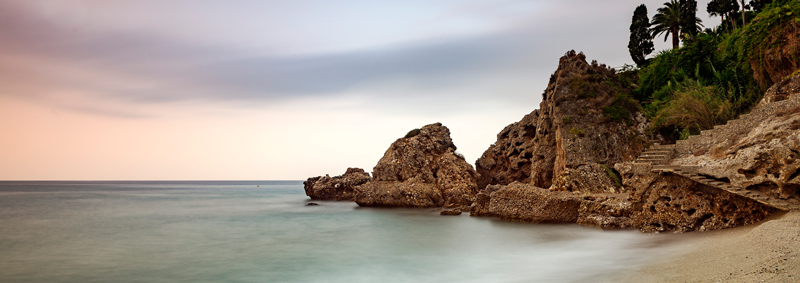According to the recent archaeological discoveries of the Cueva de Nerja, the first settlers date from the Paleolithic to the Bronze Age, passing through the Epipaleolithic and Neolithic, with important human remains belonging to the Cro-Magnon.
The first historical indications about the Naricha or Narija farmhouse are from the period of Arab domination. It must have depended in some aspects on Vélez Málaga, like other places in the area, although that does not mean that it did not have its own entity. In fact, it had its own fortress that was located in the area today known as Pago del Castillo Alto, where this Arab population was located. Some remains of it can be seen in the angle formed by the Frigiliana path, at its crossroads with the Cantera neighborhood.
A tower was built on the coastline in the XNUMXth century, similar to those that exist elsewhere on the coast.
When in 1487 the Muslims of Vélez definitively surrendered to the Catholic king, they were followed in this action by the inhabitants of most of the Axarquía. In the Christian Chronicles this action is related and among the places mentioned Narija, our Nerja, is mentioned.

El Aguila aqueduct near Nerja. Malaga province, Andalusia, Spain
After the rebellion of the Moors, already in the XNUMXth century, a new fortress was erected in the place occupied by the coastal tower of the Balcón de Europa, which will later be demolished by the French in the XNUMXth century. Around it the population that had decided to abandon its original location was concentrated.
In the XNUMXth century the hermitage of Our Lady of Sorrows was built, a sanctuary dedicated to the Patron Saint of the town. This temple contains frescoes that cover its Granada-style dome.
In 1655 the population reached 400 residents and the streets Carmen, Iglesia, El Tajillo, Puerta del Mar, Plaza de Cavana, Calle del Corralón, today Gómez, have an urban body, and Granada Street begins to be traced.
In 1660, when the mayor was D. Antonio de Villavicencio, the king ordered the construction of the Torre de los Guardas, today the Balcón de Europa. In 1697 the first phase of the parish of El Salvador was completed.
On December 25, 1884 there was a huge earthquake and on the occasion of these unpleasant events, His Majesty King Alfonso XII came to

visit the affected area. After admiring the promenade of the “battery”, he officially called it the “Balcony of Europe”. It was also granted the treatment of "Excellency" to the City Council.
During the first two decades of the 1930th century, the road to Frigiliana was built and the Paseo Balcón de Europa was urbanized. In 1950, the Balcón de Europa and Calle de la Cruz and Granada streets were finally completed. In XNUMX the Municipal Market was inaugurated.
The discovery of the Cueva de Nerja in 1959 is a symbol of the new start and then comes the great tourist development that brings progress and prosperity and that changes the appearance of the social life of Nerja.

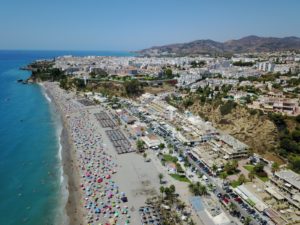 Almería on the N-340, and to the right, at the height of the “Verano Azul” urbanization. The fully equipped beach is often frequented by families. The environment is beautiful, because from it you can see mountains and cliffs. You can practice routes in kayaks, canoeing, snorkeling, scuba diving and play volleyball.
Almería on the N-340, and to the right, at the height of the “Verano Azul” urbanization. The fully equipped beach is often frequented by families. The environment is beautiful, because from it you can see mountains and cliffs. You can practice routes in kayaks, canoeing, snorkeling, scuba diving and play volleyball.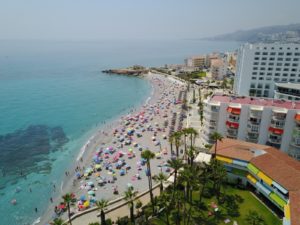
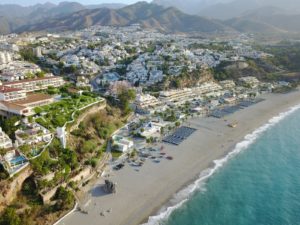
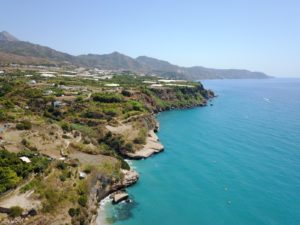

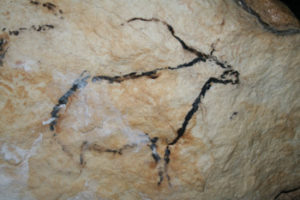
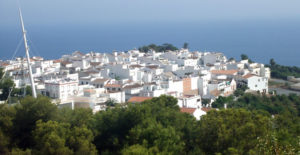 Maro is a beautiful white town that is located on the cliffs of the bay of Nerja, between the Caleta and the Barranco de Maro; between the Balcón de Europa and Cerro-Gordo.
Maro is a beautiful white town that is located on the cliffs of the bay of Nerja, between the Caleta and the Barranco de Maro; between the Balcón de Europa and Cerro-Gordo.